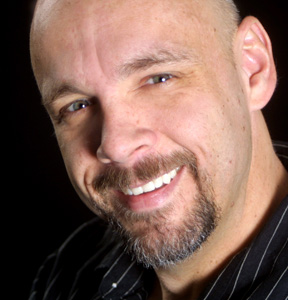Editorial
Front Page - Friday, November 12, 2010
The Critic's Corner
David Laprad

In the ‘60s, men watched Clint Eastwood in “Rawhide” and dreamed of being a cowboy. In the ‘70s, they watched Eastwood put criminals behind bars in the Dirty Harry movies and fantasized about being a cop. Today, I watch films like “Hereafter,” which Eastwood produced and directed, and dream about making great movies when I’m 80 years old.
“Hereafter” is a deeply satisfying experience. It’s populated with beautifully written characters, it tells a profound story with the attention to detail of a novel and it offers moments so real it’s as if the camera just happened to be there to capture them. While it moves slowly and requires patience, it’s worth the investment in time.
The story centers on three people touched by death in different ways. Played by Matt Damon, George is a blue collar American who can communicate with the dead when he holds the hands of another person. On the other side of the world, Marie is a well-known French journalist who has a near death experience during a tsunami. Lastly, Marcus is a London schoolboy whose twin brother is killed in an accident. Marie and Marcus both set off on journeys of discovery that lead them to George.
“Hereafter” opens with the visually stunning tsunami. Marie is swept away in its powerful waves and drowns when a chunk of debris hits the back of her head. While dead – or merely unconscious – she sees human shapes moving through a bright light. Two men revive her and she returns to Paris, where she risks losing her job as she tries to come to terms with what she experienced.
Meanwhile, Marcus, whose mother is addicted to drugs, is thrust into the child welfare system in England. Because his bond with his brother was strong, Marcus is incapacitated with loss. Unable to connect with his foster parents or concentrate at school, he begins to search for a way to speak with his dead twin. This leads to an amusing scene in which Marcus visits a variety of psychic kooks.
Eastwood then catches up with George, who’s lonely but trying to live a normal life. When he meets a pretty lady in a cooking class, he tries to keep his abilities hidden from her, but is unsuccessful. As she literally closes the door on their relationship, Eastwood holds a heartbreaking shot of George standing alone in his apartment for several seconds. When he’s laid off at work, he travels to London to visit the home of his favorite writer, Charles Dickens.
Loneliness, uncertainty, yearning and loss saturate every frame of “Hereafter.” While that sounds depressing, an undercurrent of hope drives Marie, Marcus and George forward. As the threads that eventually draw them together begin to tighten, it becomes evident screenwriter Peter Morgan and Eastwood are more interested in the here and now than in what lies ahead.
If you go into “Hereafter” hoping to see Patrick Swayze gazing tenderly at Demi Moore as he’s bathed in otherworldly light, you’ll be disappointed. “Hereafter” isn’t about solving the mystery of what’s next, but living this life to its fullest. In the end, all three characters end up in a place from which they can move on in peace, even though they still have questions. It’s a remarkably humanistic story.
It’s also Eastwood being honest. He’s publicly said he doesn’t know if there’s an afterlife, and he offers no answers in “Hereafter,” either. This frees him to make a film about what he does know: that people want to live happy, rewarding lives; that losing someone can hurt like hell, but life goes on; and that there are beautiful things to see and experience in this world.
The cast Eastwood assembled delivers the goods. Damon is perfect in a role as far removed from Jason Bourne as he could be. Also, Cecil De France makes a tricky character work; I never doubted Marie would risk everything in her search for answers. And the boy who plays Marcus hits all the right notes.
In addition to directing his actors well, Eastwood displays a good eye for what works visually. In one memorable shot, he zooms in on Marie as she becomes aware that something terrible is happening, and then switches to her point of view to show waves kicking up trees in the distance.
Although the effects are remarkable, it appears Eastwood filmed most of the movie on location in London, San Francisco and Paris, not against a green screen. This grounds the story in the present world.
I also want to mention the lush orchestral score, which Eastwood composed. To me, it sounds like music from another time.
Although my thoughts about the afterlife differ from Eastwood’s, there’s no denying “Hereafter” is a well-made and inspiring movie from a director who, like good wine, keeps getting better with age.
Email David Laprad at dlaprad@hamiltoncountyherald.com.
|
|